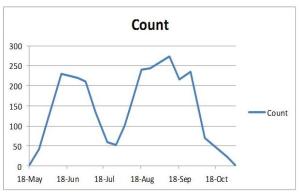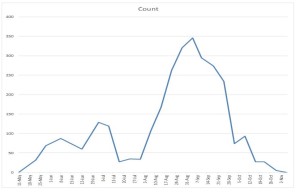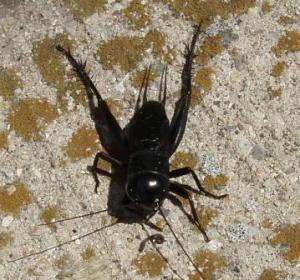by Carl Strang
The spring field cricket and the fall field cricket are our most common members of their genus, both found in all the counties of the Chicago region. They are sibling species, identical in appearance and in song, differing only by season.
The only way to be sure that spring field crickets are done for the year, or that fall field crickets have begun, is to check the rare locations where only one of the two occurs. I have adopted the practice of counting them on my weekly bicycle rides through nearby Fermilab, where both species live in good numbers. Last year’s pattern was clear.

Two clear peaks in numbers with a well-defined valley between: spring field crickets peaked in mid-June 2014, fall field crickets in mid-September, with a separation in late July.
This year things were different in some ways, but the general pattern held.

The fall field cricket pattern in 2015 again was well defined, with an earlier peak at the beginning of September. The dividing point again was in the second half of July.
The spring field cricket counts were more chaotic, and lower than those for 2014. Weather was a factor here, often rainy, often windy. This affected my ability to count them, but I think there were indeed fewer than in 2014, and also more fall field crickets than last year.

Leave a comment